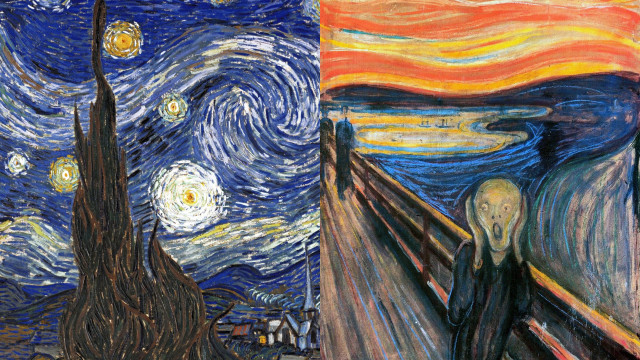





























See Also
See Again
© Getty Images
0 / 30 Fotos
Australopithecus afarensis
- The Australopithecus genus is a well-known ancestor of modern humans. Among them, the Australopithecus afarensis species gained fame when Lucy, a skeleton found in 1974, was discovered (depicted).
© Getty Images
1 / 30 Fotos
Australopithecus afarensis
- The Australopithecus afarensis inhabited East Africa about 3 to 3.7 million years ago. They had a petite build and small brain. Their height varied from 3.2 ft (96 cm) to 5.5 ft (165 cm), and their weight ranged from 55 to 141 lbs (25-64 kg).
© Getty Images
2 / 30 Fotos
Australopithecus afarensis
- Australopithecus afarensis fossils were discovered in Kenya, Ethiopia, and Tanzania. This species mostly stuck to a vegetarian diet.
© Getty Images
3 / 30 Fotos
Homo habilis
- The Homo habilis, the earliest human species belonging to the genus "homo," originated from the Australopithecus. Residing in South and East Africa, the Homo habilis existed from around 1.4 to 2.3 million years ago.
© Getty Images
4 / 30 Fotos
Homo habilis
- Compared to Australopithecus, their appearance was more polished and curved, yet they remained smaller than present-day humans, weighing around 75 lbs (34 kg) on average.
© Getty Images
5 / 30 Fotos
Homo habilis
- The Homo habilis, unlike their predecessors, consumed meat. They gained recognition for their tool-making abilities, which is how they gained their name. It literally means "handy man."
© Getty Images
6 / 30 Fotos
Homo rudolfensis
- Only a single cranium was unearthed in Kenya's Turkana Basin, and later a mandible in Malawi, both representing scarce fossils of this ancient human species. The recovered skull provides evidence of a larger brain size in comparison to Homo habilis.
© Getty Images
7 / 30 Fotos
Homo rudolfensis
- There is ongoing scientific debate regarding the classification of Homo rudolfensis within the homo genus. Some argue that it may have been an Australopithecus with a larger brain. This species existed around 1.7 million years ago, overlapping with Homo habilis and Homo erectus.
© Getty Images
8 / 30 Fotos
Homo erectus
- Unlike the previous example, there are many fossils of Homo erectus, dating from 110,000 to 1.89 million years ago. Homo erectus was the species of human that survived the longest!
© Getty Images
9 / 30 Fotos
Homo erectus
- They had larger bodies and smaller teeth than Homo habilis, and were more similar to modern humans. However, they possessed longer legs and shorter arms than us.
© Getty Images
10 / 30 Fotos
Homo erectus
- Homo erectus, who weighed around 150 lbs (68 kg), were similar in size to us, measuring between 4.9 ft (150 cm) and just over 6 ft (180 cm). Notably, they were the first human species to venture beyond Africa.
© Getty Images
11 / 30 Fotos
Homo ergaster
- The Homo ergaster inhabited Eastern and Southern Africa from 1.4 to 1.9 million years ago. Similar to Homo rudolfensis, there is ongoing scientific discussion regarding whether Homo ergaster represents a distinct species or a subspecies of Homo erectus.
© Getty Images
12 / 30 Fotos
Homo ergaster
- Homo ergaster and Homo erectus coexisted on Earth during the same period. Homo ergaster was typically leaner in physique compared to Homo erectus, but they shared similar diets, lifestyles, and both used tools.
© Getty Images
13 / 30 Fotos
Homo floresiensis
- The Homo floresiensis was found in 2003 by scientists, in the Liang Bua cave on the island of Flores in Indonesia. It is believed that this ancient human species existed approximately 50,000 to 100,000 years ago.
© Getty Images
14 / 30 Fotos
Homo floresiensis
- They were much smaller than present-day humans, yet they were skilled hunters. Archaeologists discovered hunting tools used to capture an extinct elephant species called stegodon. Researchers suggest that these individuals, believed to be descended from Homo erectus, adapted to island living by evolving into dwarfs.
© Getty Images
15 / 30 Fotos
Homo heidelbergensis
- The Homo heidelbergensis inhabited various regions around the world from 200,000 to 600,000 years ago. Fossils suggest they explored eastern and southern Africa, Europe, and potentially China.
© Getty Images
16 / 30 Fotos
Homo heidelbergensis
- They were the first human species to have the ability to thrive in colder environments. Consequently, they exhibited an aptitude for making fires, discovering and constructing shelters, and creating tools and weapons like spears.
© Getty Images
17 / 30 Fotos
Homo antecessor
- The first fossils of the Homo antecessor were unearthed in Atapuerca, Spain between 1994 and 1996. Experts have determined their age to be between 800,000 and 1.2 million years old.
© Getty Images
18 / 30 Fotos
Homo antecessor
- The Homo antecessor, unlike other ancestors, shared resemblances with modern humans, such as their facial structure and hunting habits.
© Getty Images
19 / 30 Fotos
Homo naledi
- In the year 2015, in the cave system of Rising Star in South Africa, a total of 1,550 fossils were discovered. These fossils belonged to a species known as Homo naledi. Scholars estimate that this species existed between 236,000 and 335,000 years ago.
© Getty Images
20 / 30 Fotos
Homo naledi
- They possessed characteristics resembling Australopithecus and humans, with small heads while having brains similar to ours.
© Getty Images
21 / 30 Fotos
Homo neanderthalensis
- The Neanderthals, possibly the most well-known ancient human species, existed from approximately 24,000 to 200,000 years in the past. Often depicted as "cavemen," they are believed to be our species' closest extinct ancestors.
© Getty Images
22 / 30 Fotos
Homo neanderthalensis
- Neanderthals were smaller than modern humans, but they possessed a strong physique. Inhabiting Eurasia during the Ice Ages, they adjusted to the chilly climate. Neanderthals excelled in crafting sophisticated weapons, tools, clothing, and constructing shelters.
© Getty Images
23 / 30 Fotos
Homo neanderthalensis
- Neanderthals were not only more intelligent than other species, but they also had larger brains. Additionally, they exhibited cultural expressions such as ritualistic burials, art, and musical instruments.
© Getty Images
24 / 30 Fotos
Homo neanderthalensis
- Although Neanderthals are extinct, their genetic material still exists within modern non-African humans due to interbreeding.
© Getty Images
25 / 30 Fotos
Denisovans
- The remains of this particular human species were discovered within a Siberian cave in 2010. It's estimated that they lived about 400,000 years ago.
© Getty Images
26 / 30 Fotos
Denisovans
- The Denisovans are thought to have separated from the Neanderthals and migrated to Asia, rather than Europe. They also interbred with contemporary humans, possibly representing the final archaic human species to go extinct.
© Getty Images
27 / 30 Fotos
Homo longi
- A skull was discovered in Harbin, northeastern China in 1933. This skull, known as "Dragon Man," was larger than contemporary humans and had distinct characteristics such as square eye sockets and prominent brow ridges.
© Getty Images
28 / 30 Fotos
Homo longi
- In 2021, scientists finally recognized it as a distinct human species. The fossil is estimated to be around 146,000 years old. However, the classification of Homo longi as a species is still contentious, with some scientists suggesting it belongs to the Denisovan group. Sources: (Grunge) See also: History of the hunter-gatherers
© Getty Images
29 / 30 Fotos
© Getty Images
0 / 30 Fotos
Australopithecus afarensis
- The Australopithecus genus is a well-known ancestor of modern humans. Among them, the Australopithecus afarensis species gained fame when Lucy, a skeleton found in 1974, was discovered (depicted).
© Getty Images
1 / 30 Fotos
Australopithecus afarensis
- The Australopithecus afarensis inhabited East Africa about 3 to 3.7 million years ago. They had a petite build and small brain. Their height varied from 3.2 ft (96 cm) to 5.5 ft (165 cm), and their weight ranged from 55 to 141 lbs (25-64 kg).
© Getty Images
2 / 30 Fotos
Australopithecus afarensis
- Australopithecus afarensis fossils were discovered in Kenya, Ethiopia, and Tanzania. This species mostly stuck to a vegetarian diet.
© Getty Images
3 / 30 Fotos
Homo habilis
- The Homo habilis, the earliest human species belonging to the genus "homo," originated from the Australopithecus. Residing in South and East Africa, the Homo habilis existed from around 1.4 to 2.3 million years ago.
© Getty Images
4 / 30 Fotos
Homo habilis
- Compared to Australopithecus, their appearance was more polished and curved, yet they remained smaller than present-day humans, weighing around 75 lbs (34 kg) on average.
© Getty Images
5 / 30 Fotos
Homo habilis
- The Homo habilis, unlike their predecessors, consumed meat. They gained recognition for their tool-making abilities, which is how they gained their name. It literally means "handy man."
© Getty Images
6 / 30 Fotos
Homo rudolfensis
- Only a single cranium was unearthed in Kenya's Turkana Basin, and later a mandible in Malawi, both representing scarce fossils of this ancient human species. The recovered skull provides evidence of a larger brain size in comparison to Homo habilis.
© Getty Images
7 / 30 Fotos
Homo rudolfensis
- There is ongoing scientific debate regarding the classification of Homo rudolfensis within the homo genus. Some argue that it may have been an Australopithecus with a larger brain. This species existed around 1.7 million years ago, overlapping with Homo habilis and Homo erectus.
© Getty Images
8 / 30 Fotos
Homo erectus
- Unlike the previous example, there are many fossils of Homo erectus, dating from 110,000 to 1.89 million years ago. Homo erectus was the species of human that survived the longest!
© Getty Images
9 / 30 Fotos
Homo erectus
- They had larger bodies and smaller teeth than Homo habilis, and were more similar to modern humans. However, they possessed longer legs and shorter arms than us.
© Getty Images
10 / 30 Fotos
Homo erectus
- Homo erectus, who weighed around 150 lbs (68 kg), were similar in size to us, measuring between 4.9 ft (150 cm) and just over 6 ft (180 cm). Notably, they were the first human species to venture beyond Africa.
© Getty Images
11 / 30 Fotos
Homo ergaster
- The Homo ergaster inhabited Eastern and Southern Africa from 1.4 to 1.9 million years ago. Similar to Homo rudolfensis, there is ongoing scientific discussion regarding whether Homo ergaster represents a distinct species or a subspecies of Homo erectus.
© Getty Images
12 / 30 Fotos
Homo ergaster
- Homo ergaster and Homo erectus coexisted on Earth during the same period. Homo ergaster was typically leaner in physique compared to Homo erectus, but they shared similar diets, lifestyles, and both used tools.
© Getty Images
13 / 30 Fotos
Homo floresiensis
- The Homo floresiensis was found in 2003 by scientists, in the Liang Bua cave on the island of Flores in Indonesia. It is believed that this ancient human species existed approximately 50,000 to 100,000 years ago.
© Getty Images
14 / 30 Fotos
Homo floresiensis
- They were much smaller than present-day humans, yet they were skilled hunters. Archaeologists discovered hunting tools used to capture an extinct elephant species called stegodon. Researchers suggest that these individuals, believed to be descended from Homo erectus, adapted to island living by evolving into dwarfs.
© Getty Images
15 / 30 Fotos
Homo heidelbergensis
- The Homo heidelbergensis inhabited various regions around the world from 200,000 to 600,000 years ago. Fossils suggest they explored eastern and southern Africa, Europe, and potentially China.
© Getty Images
16 / 30 Fotos
Homo heidelbergensis
- They were the first human species to have the ability to thrive in colder environments. Consequently, they exhibited an aptitude for making fires, discovering and constructing shelters, and creating tools and weapons like spears.
© Getty Images
17 / 30 Fotos
Homo antecessor
- The first fossils of the Homo antecessor were unearthed in Atapuerca, Spain between 1994 and 1996. Experts have determined their age to be between 800,000 and 1.2 million years old.
© Getty Images
18 / 30 Fotos
Homo antecessor
- The Homo antecessor, unlike other ancestors, shared resemblances with modern humans, such as their facial structure and hunting habits.
© Getty Images
19 / 30 Fotos
Homo naledi
- In the year 2015, in the cave system of Rising Star in South Africa, a total of 1,550 fossils were discovered. These fossils belonged to a species known as Homo naledi. Scholars estimate that this species existed between 236,000 and 335,000 years ago.
© Getty Images
20 / 30 Fotos
Homo naledi
- They possessed characteristics resembling Australopithecus and humans, with small heads while having brains similar to ours.
© Getty Images
21 / 30 Fotos
Homo neanderthalensis
- The Neanderthals, possibly the most well-known ancient human species, existed from approximately 24,000 to 200,000 years in the past. Often depicted as "cavemen," they are believed to be our species' closest extinct ancestors.
© Getty Images
22 / 30 Fotos
Homo neanderthalensis
- Neanderthals were smaller than modern humans, but they possessed a strong physique. Inhabiting Eurasia during the Ice Ages, they adjusted to the chilly climate. Neanderthals excelled in crafting sophisticated weapons, tools, clothing, and constructing shelters.
© Getty Images
23 / 30 Fotos
Homo neanderthalensis
- Neanderthals were not only more intelligent than other species, but they also had larger brains. Additionally, they exhibited cultural expressions such as ritualistic burials, art, and musical instruments.
© Getty Images
24 / 30 Fotos
Homo neanderthalensis
- Although Neanderthals are extinct, their genetic material still exists within modern non-African humans due to interbreeding.
© Getty Images
25 / 30 Fotos
Denisovans
- The remains of this particular human species were discovered within a Siberian cave in 2010. It's estimated that they lived about 400,000 years ago.
© Getty Images
26 / 30 Fotos
Denisovans
- The Denisovans are thought to have separated from the Neanderthals and migrated to Asia, rather than Europe. They also interbred with contemporary humans, possibly representing the final archaic human species to go extinct.
© Getty Images
27 / 30 Fotos
Homo longi
- A skull was discovered in Harbin, northeastern China in 1933. This skull, known as "Dragon Man," was larger than contemporary humans and had distinct characteristics such as square eye sockets and prominent brow ridges.
© Getty Images
28 / 30 Fotos
Homo longi
- In 2021, scientists finally recognized it as a distinct human species. The fossil is estimated to be around 146,000 years old. However, the classification of Homo longi as a species is still contentious, with some scientists suggesting it belongs to the Denisovan group. Sources: (Grunge) See also: History of the hunter-gatherers
© Getty Images
29 / 30 Fotos
How different are we from past human species?
There's still a little Neanderthal inside some of us!
© Getty Images
Congratulations Homo sapiens! We successfully avoided extinction and thrived, unlike other archaic human species. Contrary to popular belief, our evolution did not occur in a linear fashion. In fact, there were other species of humans coexisting with us during the same period. We Homo sapiens even interbred with some of them. Nevertheless, in the end, we were the sole survivors.
But what sets these early human species apart from us? To discover more, click through the gallery.
RECOMMENDED FOR YOU




































MOST READ
- Last Hour
- Last Day
- Last Week








